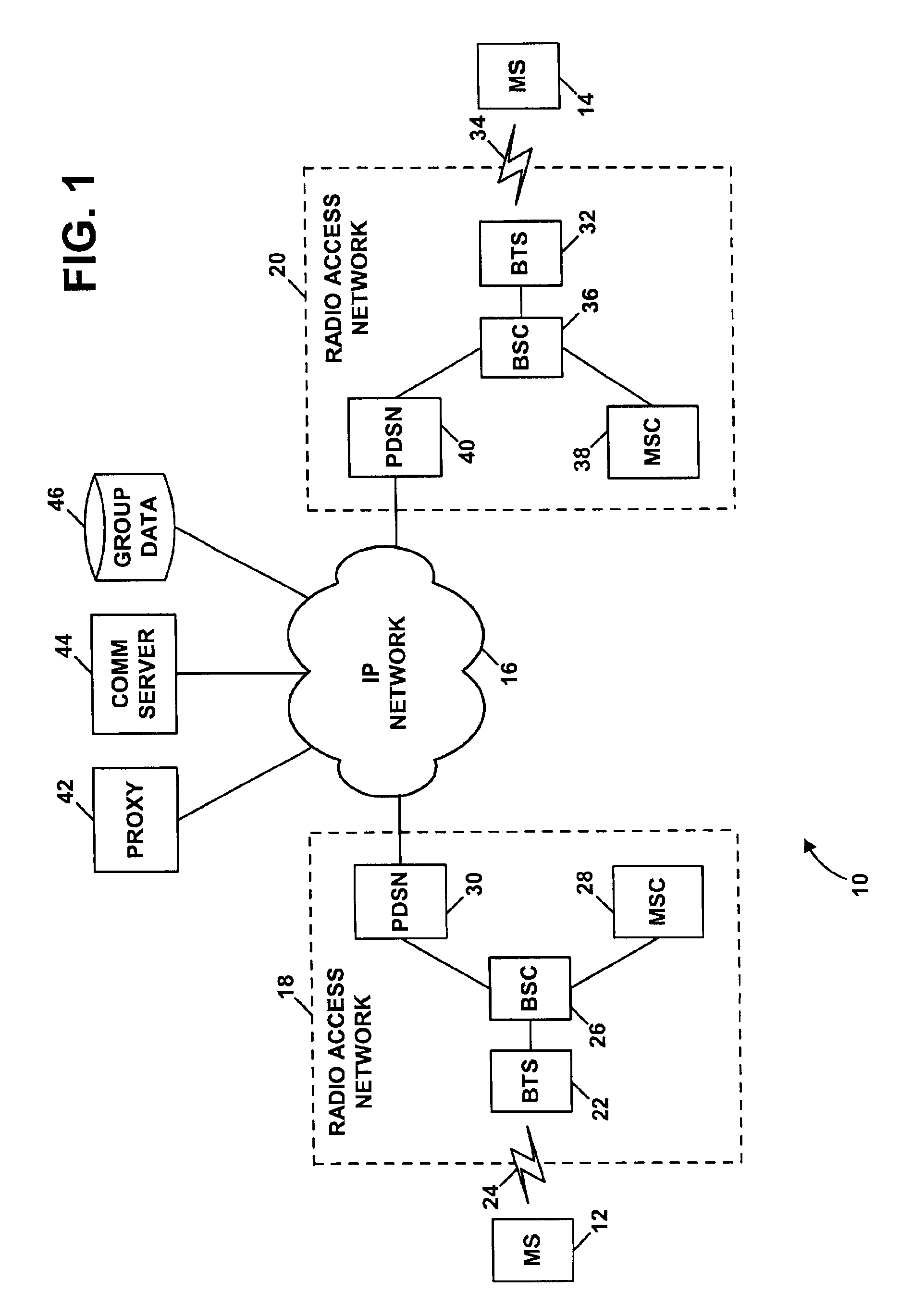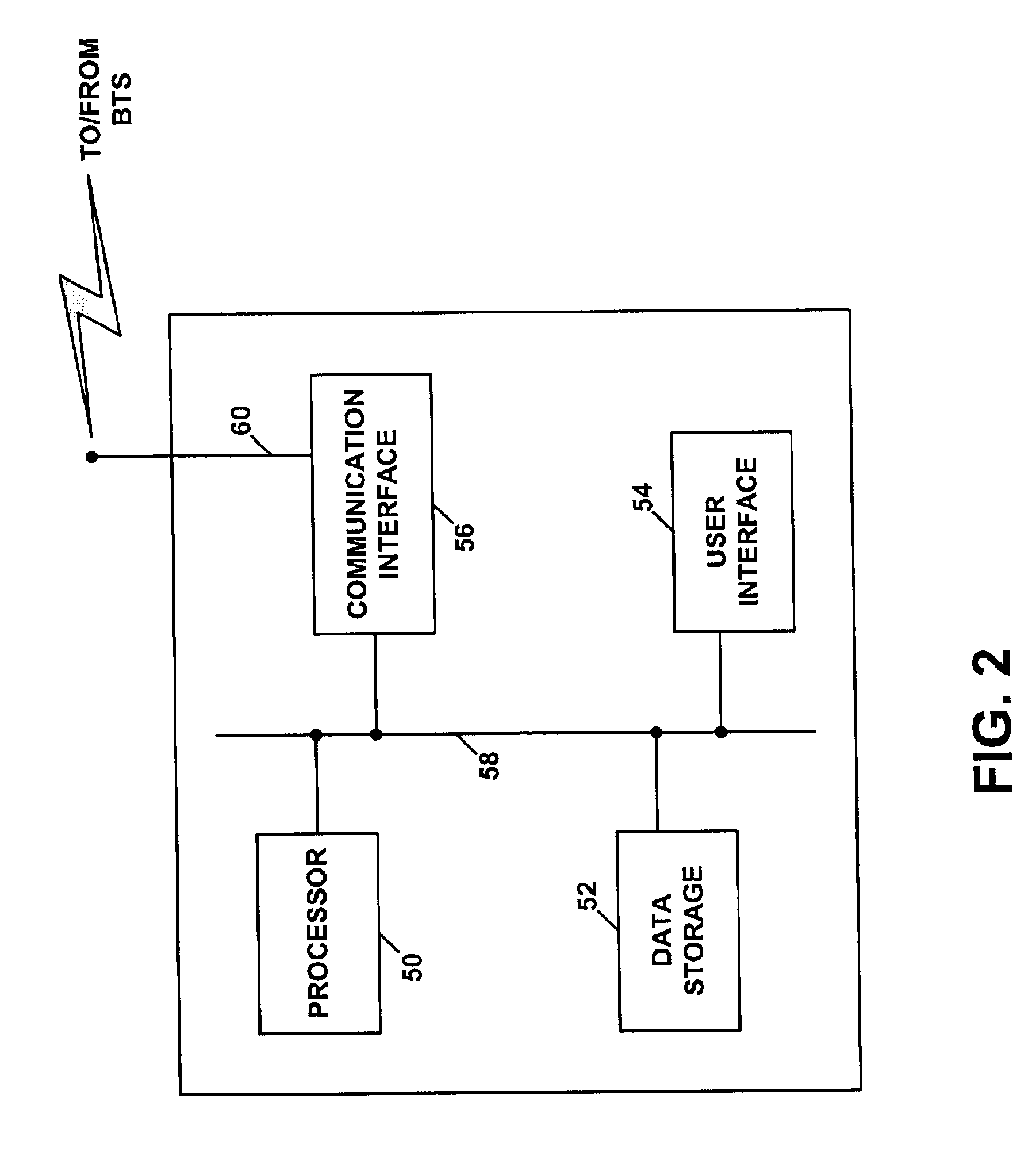Method and system for selectively reducing call-setup latency through management of paging frequency and buffering of user speech in a wireless mobile station
a wireless mobile station and call-setup latency technology, applied in the field of communication, can solve the problems of inability to initiate realtime media sessions, inability to request and wait for channel assignment, and inability to accept call setup latencies of the order of 6 or even 10 seconds, so as to reduce the process of requesting channel assignment and saving battery power
- Summary
- Abstract
- Description
- Claims
- Application Information
AI Technical Summary
Benefits of technology
Problems solved by technology
Method used
Image
Examples
Embodiment Construction
1. Exemplary Architecture
Referring to the drawings, FIG. 1 illustrates a wireless communications system 10 in which an exemplary embodiment of the present invention may be employed. It should be understood, however, that this and other arrangements and processes described herein are set forth for purposes of example only, and other arrangements and elements (e.g., machines, interfaces, functions, orders of elements, etc.) can be added or used instead and some elements may be omitted altogether. Further, as in most telecommunications applications, those skilled in the art will appreciate that many of the elements described herein are functional entities that may be implemented as discrete components or in conjunction with other components, in any suitable combination and location.
System 10 may include a number of mobile stations, such as exemplary mobile stations 12 and 14 for instance. Each mobile station (MS) can be linked by a radio access network with an IP network 16. As shown b...
PUM
 Login to View More
Login to View More Abstract
Description
Claims
Application Information
 Login to View More
Login to View More - R&D
- Intellectual Property
- Life Sciences
- Materials
- Tech Scout
- Unparalleled Data Quality
- Higher Quality Content
- 60% Fewer Hallucinations
Browse by: Latest US Patents, China's latest patents, Technical Efficacy Thesaurus, Application Domain, Technology Topic, Popular Technical Reports.
© 2025 PatSnap. All rights reserved.Legal|Privacy policy|Modern Slavery Act Transparency Statement|Sitemap|About US| Contact US: help@patsnap.com



